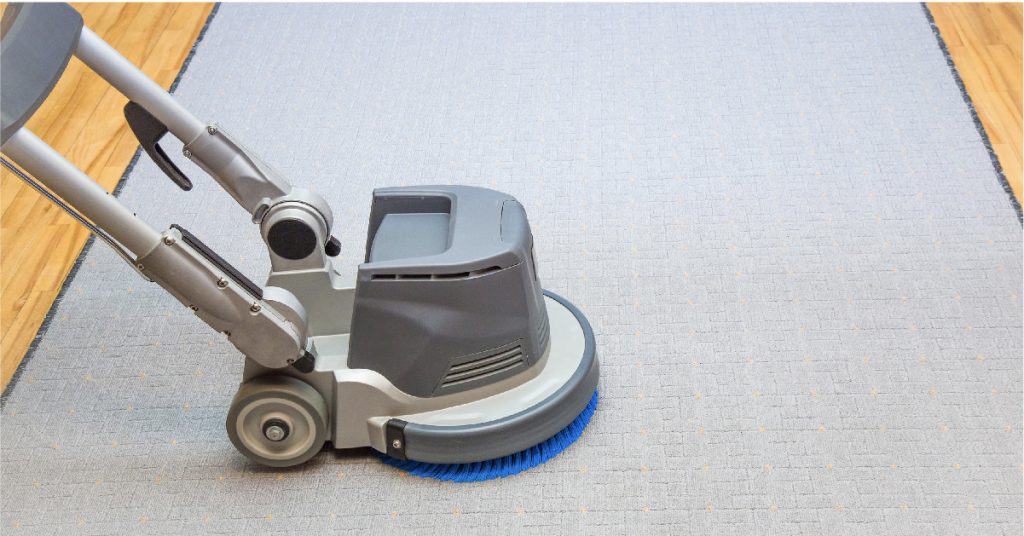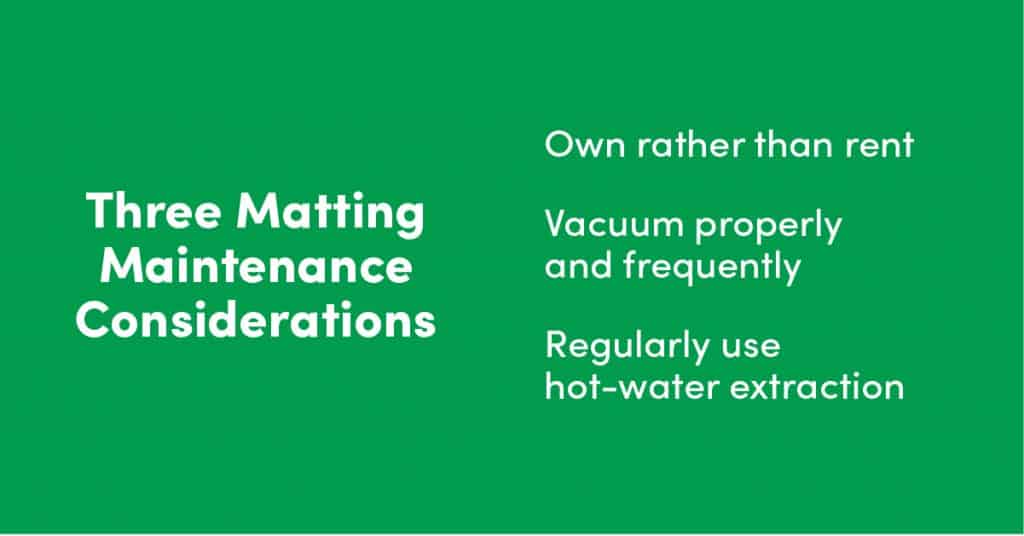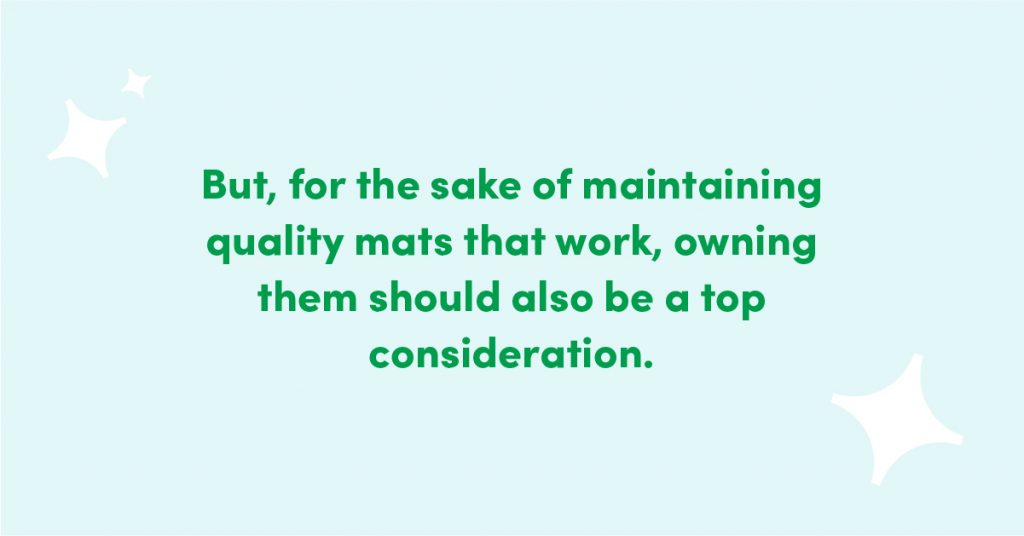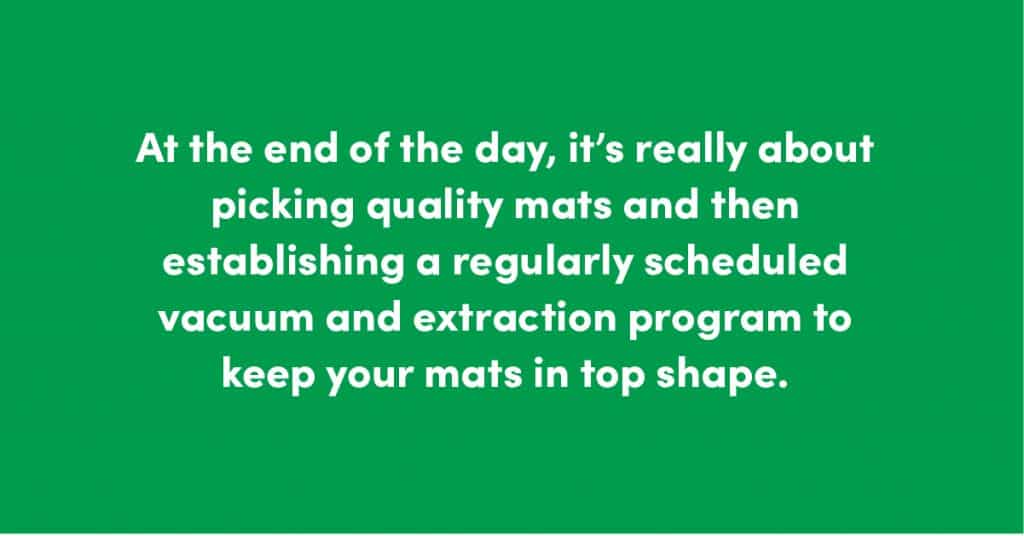When bad weather hits, it’s a sobering reminder that keeping up with matting maintenance is your facility’s first line of defense against salt, sand and grime – not to mention slip-and-fall accidents.

But here’s the deal: If you follow a few simple steps, you can keep your mats in top condition. The result: Better performing and better looking mats that protect your floors and your people.
At its core, matting maintenance comes down to three considerations:
- Own rather than rent
- Vacuum properly and frequently
- Regularly use hot-water extraction

Own vs. Rent
We’ve written about the financial benefits of owning rather than renting your matting. Check out 10 Reasons it’s Better to Own than Rent if you want the details.
But, for the sake of maintaining quality mats that work, owning them should also be a top consideration.

Here’s the main reason why you should own: Rental matting often isn’t much thicker than a magazine. That means it doesn’t absorb as much water or grime. And that means they don’t work as well.
Quality matting is heavy. It absorbs loads of water and winter gunk. Additionally, its corners and edges won’t curl. That helps reduce trips.
And while the look of your mats may not be your top priority, the perception of clean often is as important as the actual cleanliness of mats. If they’re faded, frayed or stained they look dirty. That’s not the first impression you want.
Vacuum … and then vacuum again.
It sounds straightforward and obvious, we know. But this is the workhorse of any matting maintenance program.
Make sure you’re vacuuming all carpets daily. If your company salts and sands, you’re going to want to vacuum mats two to three times each day. If you don’t have one, consider adding a day porter to your team to handle workday cleaning needs such as vacuuming.
The goal is to keep that salt, dirt and sand from making it into the building. This saves maintenance time and costs and also keeps hard floors from becoming slick.
Additionally, when salt and dirt grinds into a mat, it’s going to make it less effective. The more dirt in the mat, the less that mat can do its job.
Hot-water extraction – spa day for your mats
Who doesn’t need some extra attention after being trampled on all day at work? Enter, hot-water extraction.
Hot-water extraction is the process of using special machines to pull dirt and grime up from the bottom of your mats, ensuring fibers are thoroughly cleaned. The hot water penetrates the carpet, and is extracted using the same high-power machine.
Extraction is efficient and effective, which is why we recommend it’s built into your matting maintenance program. At KleenMark, we can do about 50 mats in two hours. An extractor pulls out 99 percent of the water, meaning your mats are dry by the morning.
To go full circle, one reason we recommend buying your mats is because they’re easier to clean. Our favorite mats use berber carpet, which is often four to five times thicker than a rental. Because they’re more durable and robust, they can hold more dirt AND you can use an extractor to remove that grime. Browse a variety of berber and anti-slip mats.

At the end of the day, it’s really about picking quality mats and then establishing a regularly scheduled vacuum and extraction program to keep your mats in top shape. Do this, and your building’s not just going to be cleaner – it’s going to look better all winter.
